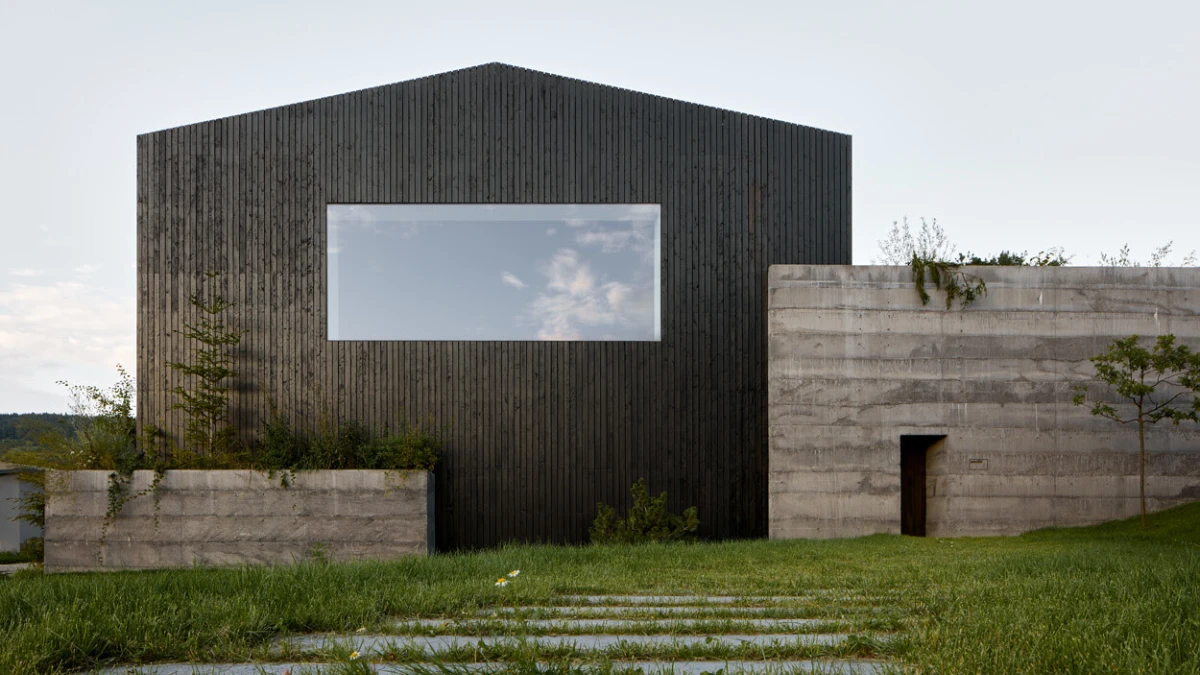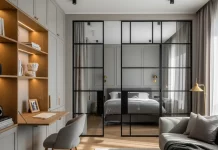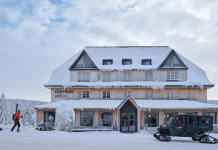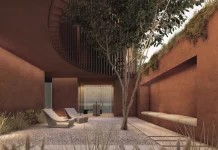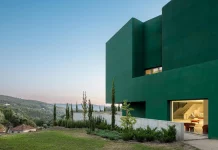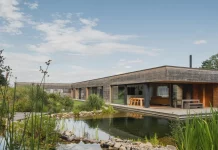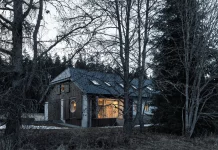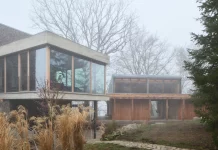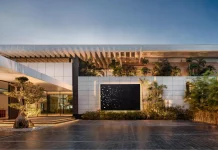In the rolling landscape where the White Carpathians meet lush meadows, a remarkable building now stands. The new Janošík’s experiential HQ is a testament to visionary architecture. It transforms a humble 1950s grain warehouse into an inspiring headquarters and showroom. This project, led by architect Jakub Janošík, represents more than a mere renovation. Instead, it offers a profound meditation on how buildings connect us to the world. It fundamentally questions what a workspace can be. The result is a structure that is both a place of business and a sensory experience.
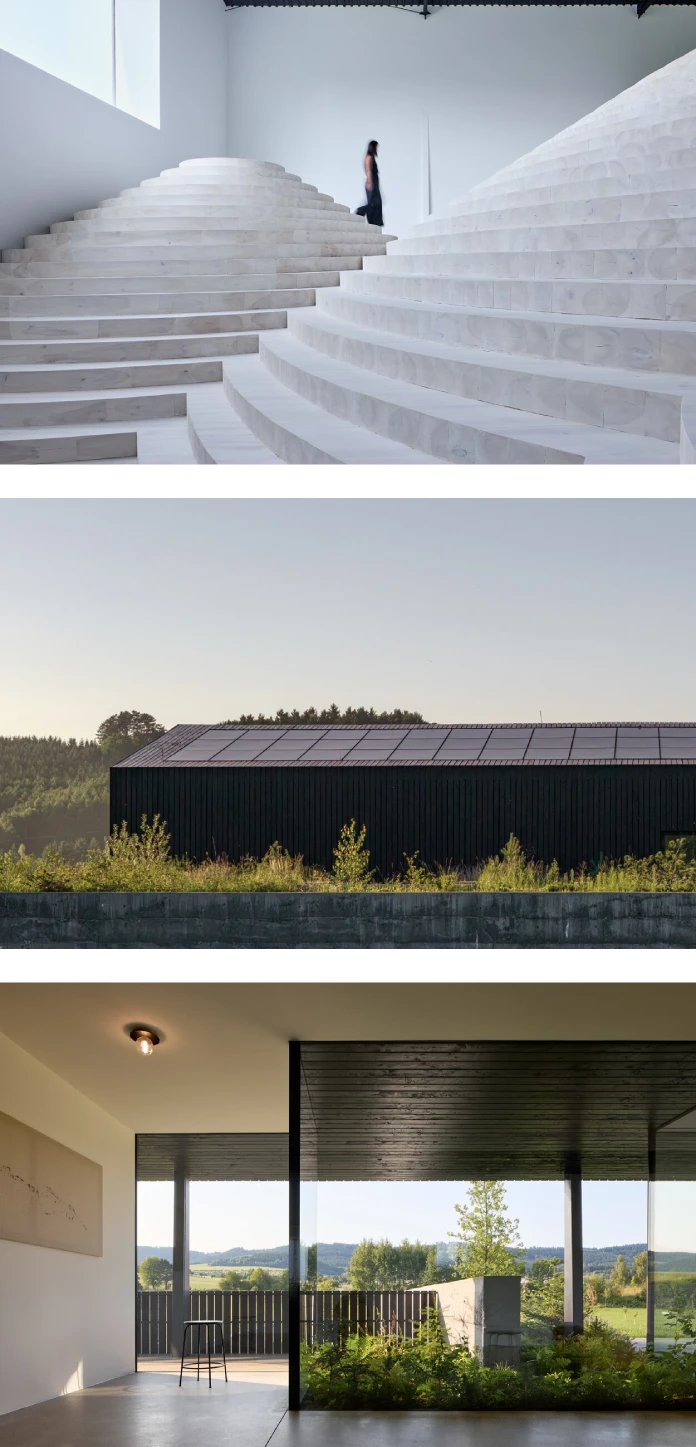
Spoj—The Link: A Philosophy Made Physical
The building is named Spoj, which translates to The Link. This single word powerfully captures its entire purpose. The architecture forges a tangible connection between Janošík’s high-quality windows and the surrounding landscape. It physically embodies the company’s philosophy. Jakub Janošík, who guides the family company’s artistic direction, envisioned a pleasant space for work. Furthermore, he wanted a place to truly experience their products. The design emerged from a deep reflection on how windows shape atmosphere. How can they do more than just let in light? How can they frame nature and merge indoor and outdoor life?
From Enclosed Hall to Open Embrace
The original structure was a closed-off building, separated from the meadow by a road and fence. The reconstruction project symbolically and physically demolished these barriers. A new concrete “embrace” now wraps around the original hall’s traditional gabled form. This innovative addition pulls the meadow directly to the building’s edge. Consequently, one can step from an office, five meters above the ground, directly onto the grass. The architecture transforms a barrier into a seamless link. It reveals the very essence of a window: connection.
The Living Showroom: A Showcase of Possibilities
The Janošík’s experiential HQ is far more than a static display of products. It serves as a living, breathing showroom where design possibilities come to life. The entire building is interwoven with a diverse array of window and door solutions. This allows visitors to not just see the products, but to feel their impact on a space. It acts as both a showcase and an experimental ground for form and function.
Pushing the Boundaries of Innovation
Here, conventional designs give way to groundbreaking ideas. The showroom features large-format sliding glass walls that move effortlessly. It even presents sliding windows that float on an electromagnetic field. This technology allows exceptionally large glass panels to glide aside with ease. Visitors can also interact with impressive pivot doors and a unique seating window. In this design, the glass fully retracts, placing you directly in the garden. Materials are also a key focus, with products clad in elegant brass or rustic corten steel.
An Architecture of Merging and Restraint
The building’s design was shaped by a desire for a quiet, respectful presence in the landscape. It needed to connect with nature without disturbing it. Therefore, the exterior is rougher and darker, clad in black-painted larch that shows its natural grain. This allows the structure to recede visually. Conversely, the interior is a calm, white gallery for the ever-changing images of the landscape. Bleached spruce, natural oak, and dark grey concrete add warmth and texture. The expression thoughtfully follows traditional Wallachian architecture.
The structure’s mass cleverly intertwines the two main volumes. From three sides, the building has a monumental feel. Toward the landscape, however, it softens, pushed into the terrain to become a light horizontal line. Four strategic cut-outs are carved into the dark wooden volume. A single, massive 9 × 3.2-meter window dominates the main façade. It reveals the activity inside and acts as a clear sign for visitors.
A Focus on Environmental Harmony
Sustainability was a core principle from the project’s inception. Instead of demolition, the team chose adaptive reuse, preserving the existing structure. This decision significantly reduced the building’s energy demand. New insulation and high-performance windows were critical. The design also leverages passive solar strategies. Loggias and roof overhangs provide shade in the summer, which eliminates the need for air conditioning. During hot days, underfloor cooling can be used. The roof is fitted with solar panels that sit flush with the surface, blending seamlessly with the building’s dark form.
An Interior Shaped by Views and Light
The interior space is a masterclass in minimalism and focus. Its layout is defined by recessed loggias, an open roof structure, and a central corridor. Private offices and meeting rooms line the sides for quiet, undisturbed work. The central area, however, remains open, functioning like a communal square. It connects directly to the garden through a vast sliding glass wall.
The furnishings were all custom-made for the building in Janošík’s own workshop. The design of the furniture does not draw attention to itself. In fact, decoration is almost entirely absent. The space is instead filled by the powerful presence of the landscape. Light, darkness, proportion, and rhythm become the primary elements that shape moments of quiet beauty.
From Nature to Culture: Artistic Interventions
Where the influence of nature did not reach, three artistic interventions extend the dialogue. These pieces were born from discussions about atmosphere and how to cultivate it.
Hills by Maxim Velčovský
Beyond the low, dark entrance, the main hall opens to a soaring 12-meter height. Here, Maxim Velčovský designed a monumental object that is both a sculpture and a staircase. Made from forty cubic meters of solid pine, its form depicts the silhouettes of the surrounding White Carpathians. It embodies natural beauty and reminds us of human craftsmanship. The staircase also acts as an amphitheater, a place to gather and gaze through the vast window.
Through Landscape by Lukáš Musil (Musa)
The building’s emptier spaces are animated by a cycle of 15 paintings by Lukáš Musil. The artist tailored each piece in size, mood, and technique for its specific location. Pigment was applied from the back, seeping through the canvas to speak quietly into the space. The works offer a sense of the ineffable, a dialogue with the Wallachian landscape.
Holt by DECHEM Studio
DECHEM Studio translated the building’s raw materiality into the medium of glass. The studio created a collection of pendant lights, lamps, and vases. Their design relies purely on the spherical form, while the texture of the glass is unique in each piece. The same textured glass was used for office doors, transmitting light while preserving privacy. This project ultimately shows us that a workplace can be so much more. It can be a source of inspiration, a place of connection, and a true work of art.
All images © Filip Beránek and Jakub Janošík. Don’t hesitate to find other trending architecture and interior design projects here at WE AND THE COLOR.
Subscribe to our newsletter!

